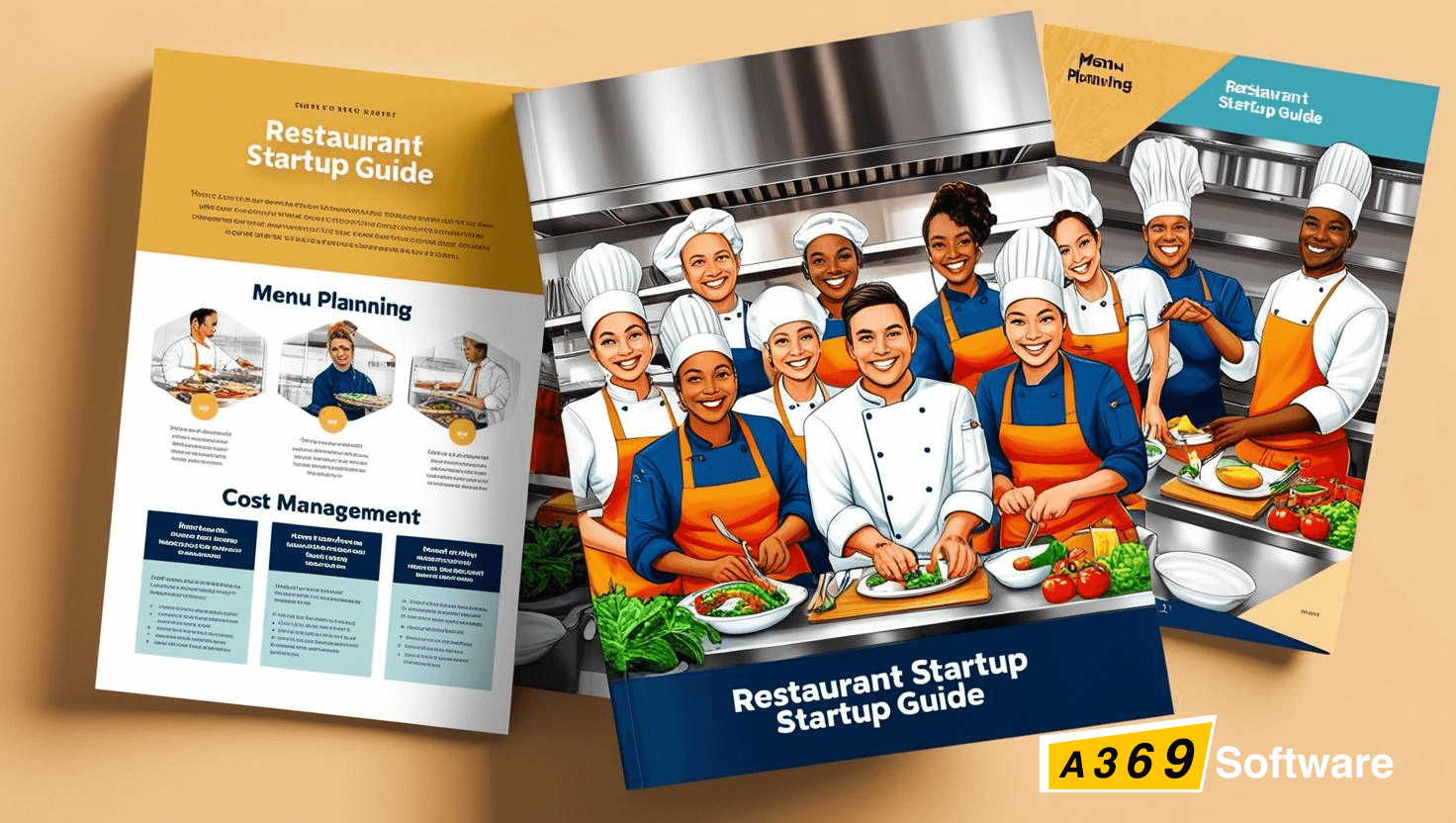Learning how to start a restaurant is a complex but rewarding journey that requires careful planning and execution. This restaurant startup guide will walk you through every essential step — from choosing a concept and writing a business plan to launching your grand opening in 2025. Whether you’re a first-time entrepreneur or a seasoned restaurateur, this comprehensive restaurant startup guide provides practical insights to help you open a successful restaurant with confidence.
1. Developing Your Restaurant Concept

1.1. Choose Your Cuisine
Decide what type of food you want to serve. Are you opening a fine dining, casual, fast food, or specialty restaurant? Your choice will influence your target audience, pricing, and overall brand identity.
1.2. Define Your Target Audience
Understand who your customers will be, their preferences, and expectations. Conduct market research to identify gaps in the market and tailor your offerings accordingly.
1.3. Create a Unique Selling Proposition (USP)
What makes your restaurant different from competitors? This could be your signature dish, ambiance, exceptional service, or a unique dining experience.
2. Crafting a Solid Restaurant Business Plan

2.1. Executive Summary
Outline your vision, mission, and what makes your restaurant special. This section should provide a snapshot of your business and its objectives.
2.2. Market Analysis
Study your competitors and market demand. Identify trends, customer preferences, and potential challenges in your chosen location.
2.3. Operational Plan
Detail your daily operations, suppliers, staffing, and workflows. Define roles and responsibilities to ensure smooth operations.
2.4. Financial Projections
Estimate startup costs, revenue forecasts, and break-even analysis. Include projected income statements, cash flow statements, and balance sheets.
3. Securing Restaurant Financing Options

3.1. Personal Savings and Investments
Utilize personal funds or seek investments from family and friends. This approach may offer more flexibility but can carry personal financial risks.
3.2. Bank Loans and SBA Loans
Apply for traditional bank loans or Small Business Administration (SBA) loans, which often offer favorable terms for small businesses.
3.3. Angel Investors and Venture Capital
Attract investors who are interested in funding promising restaurant concepts. Prepare a compelling pitch and business plan to secure funding.
4. Finding the Perfect Restaurant Location

4.1. Analyze Foot Traffic and Demographics
Busy streets and popular neighborhoods usually attract more customers. Ensure the location aligns with your target audience’s preferences.
4.2. Accessibility and Parking
Ensure customers can easily reach and park at your restaurant. Consider proximity to public transportation and availability of parking spaces.
4.3. Lease Terms and Negotiations
Negotiate fair rental agreements with flexible terms. Understand the lease duration, renewal options, and any restrictions that may affect your operations.
By following this restaurant startup guide, you’ll be equipped to overcome the initial challenges and thrive in the competitive food service industry.
5. Navigating Restaurant Permits and Licenses

5.1. Business License
Required to legally operate. Check with local authorities for specific requirements and application procedures.
5.2. Food Service License
Inspections by health departments ensure food safety. Compliance with health codes is essential to avoid penalties and closures.
5.3. Liquor License
If serving alcohol, this is mandatory. The process can be lengthy and varies by location, so start early.
5.4. Fire and Safety Permits
Compliance with fire codes and safety regulations is essential. Regular inspections may be required to maintain these permits.
6. Designing Your Restaurant Menu

6.1. Balance Variety and Focus
Offer enough options without overwhelming customers. A focused menu can streamline operations and reduce inventory costs.
6.2. Pricing Strategy
Set competitive prices covering costs and generating profit. Consider food costs, labor, and market rates when determining prices.
6.3. Highlight Signature Dishes
Promote your unique recipes or specialties. Signature dishes can become a draw for repeat customers and word-of-mouth marketing.
7. Hiring and Training Restaurant Staff

7.1. Recruit Experienced Personnel
Chefs, servers, and managers are the backbone of your restaurant. Look for candidates with relevant experience and a passion for hospitality.
7.2. Provide Comprehensive Training
Emphasize customer service, hygiene, and operational procedures. Ongoing training ensures consistency and quality in service.
7.3. Create a Positive Work Environment
Retain employees by fostering respect and teamwork. A supportive culture can reduce turnover and improve morale.
If you’re unsure how to recruit a great team, our Restaurant Hiring Guide will help you navigate the process.
8. Implementing Restaurant Marketing Strategies
8.1. Build an Online Presence
Create a website and active social media profiles. Share engaging content, respond to reviews, and showcase your offerings.
8.2. Leverage Local SEO
Optimize your site for searches like “restaurants near me.” Claim your business on platforms like Google My Business and Yelp.
8.3. Run Promotions and Loyalty Programs
Opening discounts, loyalty programs, and events encourage visits. Monitor the effectiveness of these initiatives and adjust as needed.
9. Preparing for a Successful Restaurant Grand Opening
9.1. Soft Opening
Invite friends, family, and local influencers for a trial run. Gather feedback to make necessary adjustments before the official launch.
9.2. Plan Opening Events
Organize special promotions or live entertainment. Create buzz through press releases and social media campaigns.
10. Managing Your Restaurant Business Efficiently
10.1. Track Finances
Monitor cash flow, expenses, and profitability regularly. Utilize accounting software to keep accurate records and generate reports.
10.2. Maintain Quality
Consistently deliver excellent food and service. Implement quality control measures and solicit customer feedback.
10.3. Adapt and Innovate
Stay updated with trends and customer preferences. Be willing to adjust your menu, services, or marketing strategies as needed.
Conclusion
Successfully starting your restaurant involves more than just a passion for food; it requires strategic planning, effective marketing, and strong management. By following the steps outlined in this guide, you will be well-prepared to start your restaurant on the right foot and create a thriving culinary business. Remember, the foundation you build today will determine the long-term success of your restaurant.
Note: This guide incorporates insights from industry experts and reputable sources to provide a comprehensive overview of starting a restaurant. For more detailed information, consider consulting resources such as the Escoffier Guide on How to Start a Restaurant and the WebstaurantStore’s 11 Steps to Success.
👉 Thinking of Starting a Restaurant? Here’s Your Complete Step-by-Step Guide for 2025
In addition, if you’re wondering about the general process, this essential guide on how to open a restaurant will help you understand all the basic steps involved — no matter the type of restaurant you have in mind.
For those who want to begin with a smaller setup, we’ve also prepared a dedicated article on how to start a small restaurant. It focuses on budget-friendly strategies and practical steps to get your dream off the ground.
Looking for more inspiration? Take a look at this real-world example of launching a small eatery successfully to learn from others who’ve done it before.
Finally, don’t forget to bookmark our restaurant startup checklist — a free tool to help you stay organized from day one.

